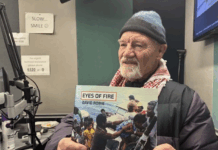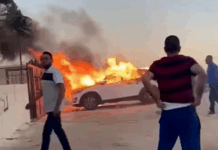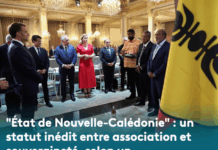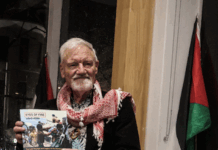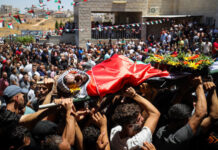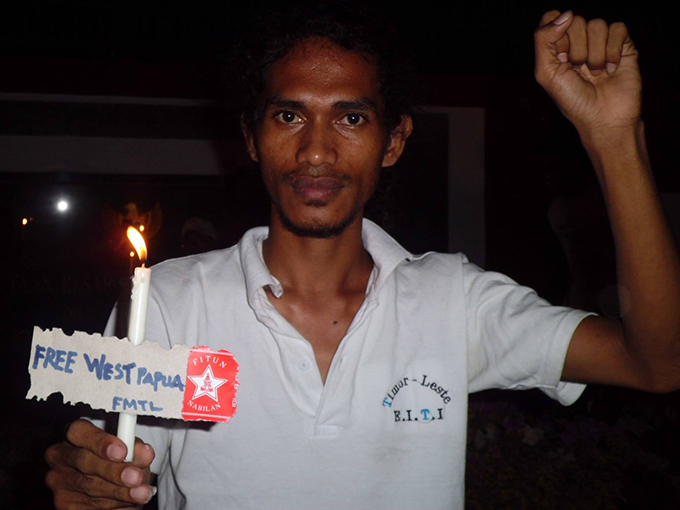
Media freedom is under threat now more than ever – and many of the worst violators are in the Asia-Pacific region, says the Paris-based global watchdog Reporters Without Borders/Reporters Sans Frontières (RSF).
 The 2017 RSF World Press Freedom Index reflects a world in which attacks on the media have become commonplace and strongmen are on the rise.
The 2017 RSF World Press Freedom Index reflects a world in which attacks on the media have become commonplace and strongmen are on the rise.
“We have reached the age of post-truth, propaganda, and suppression of freedoms,” said RSF.
The latest freedom index “highlights the danger of a tipping point in the state of media freedom in many countries”.
“Media freedom has retreated wherever the authoritarian strongman model has triumphed. The obsession with surveillance and violations of the right to the confidentiality of sources have contributed to the continuing decline of many countries previously regarded as virtuous.”
A total of 21 countries are now coloured black on RSF’s global press freedom map because the situation there is classified as “very bad,” and 51 are coloured red — the situation in these countries is classified as “bad”.
Overall, the situation has worsened in nearly two-thirds (62.2 percent) of the 180 countries monitored in the index.
Woes and ills
The index unveils woes and ills that are obstacles to media freedom throughout the world.
The Asia-Pacific region is the third-worst violator overall but has many of the worst kinds of records, says the RSF report.
Two countries in the region, China (176th) and Vietnam (175th), are the world’s biggest prisons for journalists and bloggers.
 The Asia-Pacific also has some of the most dangerous countries for journalists — Pakistan (139th), Philippines (127th) and Bangladesh (146th).
The Asia-Pacific also has some of the most dangerous countries for journalists — Pakistan (139th), Philippines (127th) and Bangladesh (146th).
Some of the biggest “press freedom predators” at the head of the world’s worst dictatorships — including China, North Korea (180th), and Laos (170th) — are in the region and these countries are news and information “black holes”.
“More and more Asian governments deliberately confuse the rule of law with rule by law,” said Benjamin Ismaïl, the head of RSF’s Asia-Pacific desk.
“By adopting increasingly draconian laws, governments with authoritarian tendencies hope to justify their attempts to gag the media and critics.
“When this is not enough to ward off condemnation by the international community, these governments are quick to brandish the principles of non-interference, sovereignty or even national security in order to escape their international human rights obligations and their constitutional duty to protect freedom of the media and information.”
Pacific highlights in the RSF report include:
Australia (rose 8 places to 19th)
Australia has a strong public media, but the ownership of its print media is heavily concentrated. Two media groups – News Corporation (owned by billionaire Rupert Murdoch) and Fairfax Media – are responsible for 85 percent of newspaper sales. Overall, the media enjoy a great deal of freedom, although protection of journalists’ sources varies from state to state. Coverage of Australia’s refugee detention centers on Manus Island (off Papua New Guinea) and the Pacific Ocean island of Nauru is nonetheless restricted. New laws in 2015 provided for prison sentences for whistleblowers who disclose information about conditions in the refugee centers or operations by the Australian Security Intelligence Organisation. A telecommunications law has opened the door for surveillance of the metadata of journalists’ communications. Federal police raids on Labor Party parliamentarians in 2016 violated the confidentiality of sources and showed that the authorities were more concerned about silencing the “messengers” than addressing the issues of concern to the public that had been raised by their revelations.
Fiji (rose 13 places to 67th)
The adoption of a new constitution in 2013 and the ensuing parliamentary elections in September 2014, the first since the 2006 coup d’état, had a positive impact on access to information. This could be seen in the public debate and pluralistic coverage during the election itself, despite some problems in the run-up. The media are nonetheless still restricted by the 2010 Media Industry Development Decree and the Media Industry Development Authority (MIDA) that it created. Violating the decree is punishable by up to two years in prison. After giving the media additional leeway during the election, Prime Minister Voreqe Bainimarama resumed his policy of keeping the foreign media at a distance and publicly described them as “hostile.” In 2016, this was his grounds for a blacklist of foreign journalists that include Barbara Dreaver, a reporter for New Zealand’s Television NZ, and Michael Field [lifted later in the year].
Indonesia/West Papua (rose 6 places to 124th)
President Joko Widodo has not kept his campaign promises. His presidency continues to be marked by serious media freedom violations, including a lack of media access to West Papua (the Indonesian half of the island of New Guinea), where violence against local journalists continues to grow. Foreign journalists and local fixers are liable to be arrested and prosecuted if they try to document the Indonesian military’s abuses there. But, as the Jakarta-based Alliance for Independent Journalists reports, intimidation and even violence by the military against journalists who cover their abuse is not limited to West Papua. Radical religious groups also pose a threat to the right to inform. Many journalists say they censor themselves because of the threat from an anti-blasphemy law and the Electronic and Information Transactions Law.
New Zealand (dropped 8 places to 13th)
Media freedom thrives in New Zealand but is not entirely exempt from political pressure. The media continue to demand changes to the Official Information Act, which obstructs the work of journalists by allowing government agencies a long period of time to respond to information requests and even makes journalists pay several hundred dollars for the information. In August 2016, the government revealed a grim future for whistleblowers, announcing a bill that would criminalise leaking government information to the media and would dramatically increase the surveillance powers of the intelligence services. Journalists, bloggers, and civil society representatives would be among the potential targets of the proposed law, which could be adopted in 2017.
Papua New Guinea (rose 5 places to 51st)
Papua New Guinea’s media are diverse and dynamic and enjoy a relatively free environment, but journalists are still subject to violence. There have been several cases in 2017 of journalists being the targets of police violence, such as when the police opened fire on students demonstrating peacefully. Prime Minister Peter O’Neill’s government seems to have turned a deaf ear to calls from the media to guarantee their safety. Some officials encourage media self-censorship by directly threatening journalists whose articles criticise them. Although Australia announced that it would close its refugee detention centre on Papua New Guinea’s Manus Island, the centre is still operating. Journalists trying to cover the fate of the centre’s detainees were obstructed from doing so during 2016.
Samoa (rose 8 places to 21st)
Thanks to the liveliness of media groups such as Talamua Media and the Samoa Observer Group and individual newspapers such as Iniini, Samoa continues to be a model in the Pacific region. The Media Council law adopted in early 2015 decriminalised defamation but some media outlets had their reservations, accusing the ruling Human Rights Protection Party of planning to use the Council to exercise more effective control over the Samoan media. The Samoa Media Council was finally created in 2016 and its first task was the adoption of a code of ethics in February 2017. However, some media outlets are still concerned that the government could take advantage of the Council in the event of conflicts with the media.
Timor-Leste (rose 1 place to 98th)
No journalists have even been jailed in connection with their work in Timor-Leste (East Timor), a country with fewer than 1.2 million inhabitants. Articles 40 and 41 of its Constitution guarantee free speech and media freedom. However, various forms of pressure are used to prevent journalists from working freely, including legal proceedings, police violence, and public denigration of media outlets by government officials or parliamentarians. The creation of a Press Council in 2015 was a step in the right direction, despite the reservation expressed by the media about the way its members are elected. But the media law adopted in 2014, in defiance of the international community’s warnings, poses a permanent threat to journalists and encourages self-censorship. Until now, East Timor has never managed to enter the top half of the World Press Freedom Index, but all eyes are now turned on President-Elect Francisco Guterres and the policies he may adopt to promote media freedom.
Tonga (dropped 12 places to 49th)
Independent media outlets have increasingly assumed a watchdog role since the first democratic elections in 2010, and in 2014 began asserting themselves in their criticism of the government and its policies. However, some political leaders do not hesitate to sue media outlets, exposing them to the risk of heavy damages awards. Journalists are forced to censor themselves under the threat of going bankrupt. In an effort to regulate “harmful” online content, especially on social networks, the government adopted new laws in 2015 including the Communications Amendment Act, which provides for the creation of an Internet regulatory agency with the power to block websites without reference to a judge. In 2016, Prime Minister Samuela ‘Akilisi Pōhiva, the leader of the pro-democracy party, repeatedly called on Tonga’s public broadcaster to suspend a journalist for asking him too many tough questions. It was indicative of the increase in tension between the government and media since his election in 2014.



